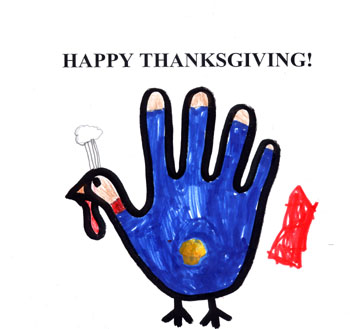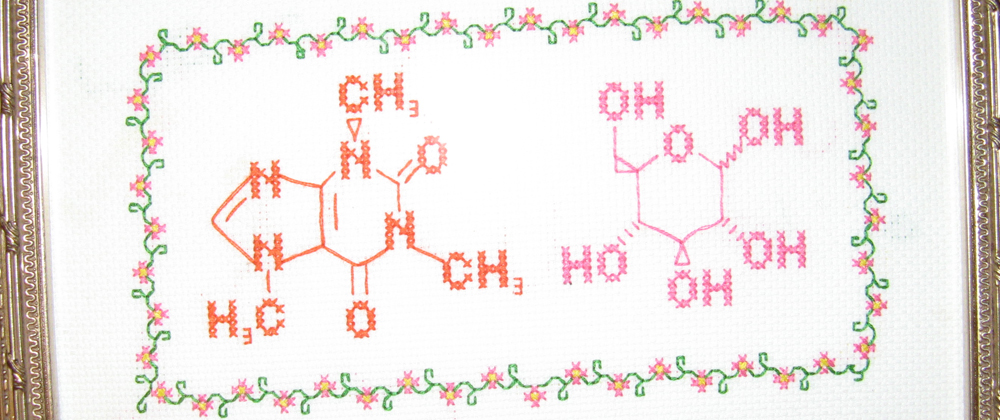Scott Eric Kaufman wants to know how fast a meme can sweep the blogosphere. And it’s not just a matter of idle curiousity: his MLA presentation depends on it.
He writes:
Biological rhythms: the post-Thanksgiving head-cold.
I have a question for the scientifically informed hive-mind:
Why is it that no matter what I do, I end up with a head-cold by a few days after Thanksgiving?
This is cool, but is it safe?
Robert Krulwich made my ride home today way more interesting than it had a right to be.
Friday Sprog Blogging: Thanksgiving week.
 The Free-Ride offspring spent Thanksgiving with the Grandparents Who Lurk But Seldom Comment, cutting into the opportunities for the Free-Ride parents to ask them about matters scientific. Nonetheless, the sprogs have been doing science-y things on their vacation from parents. Two highlights:
The Free-Ride offspring spent Thanksgiving with the Grandparents Who Lurk But Seldom Comment, cutting into the opportunities for the Free-Ride parents to ask them about matters scientific. Nonetheless, the sprogs have been doing science-y things on their vacation from parents. Two highlights:
- A visit to the Griffith Observatory, where they not only took in a planetarium show, but also weighed themselves on Mercury. (Both elder offspring and younger offspring weighed in at zero — clearly Mercury is the right planet to visit after a heavy Thanksgiving meal!)
- A visit to the California Science Center. The sprogs especially liked exhibits on animation (not only because there were lots of funny cartoon clips, but also because there were interesting how-tos) and on how airplanes fly (since, as elder offspring explains, “you can make anything fly if you know how to shape a wing”). They also took in an IMAX film, Deep Sea 3D, which featured fish, jellyfish, sharks, Humboldt squid, octopus — lots of old favorites.
There was also some feeding of ducks, I’m told.
Meanwhile, the Free-Ride parents took a hike.
Mendeleev rips off French geologist?
The New York Times has taken notice of the history and philosophy of chemistry in a small piece about a new book, The Periodic Table: Its Story and Significance by Eric R. Scerri. In particular, the Times piece notes the issue of whether Dimitri Ivanovich Mendeleev was “borrowing” from the work of others (without acknowledging that he had done so) when he put forward his version of the periodic table of the elements:
Two NYT stories worth a look.
Some readers have called to my attention a pair of recent stories from the New York Times that you may find interesting.
First, Audrey noted another dispatch on the eternal struggle over how math ought to be taught:
Brain-Friendly Giftables, part 1: Books.
As promised, I bring you some gift recommendations for kids who are into math or science (or could be if presented with the right point of entry). The first installation: books.
Books are the best. They don’t need batteries or assembly. They don’t have lots of little parts that will end up strewn on the floor (or lost under the couch). You can read them alone or read them with others.
You can buy ’em new, but you can also find some amazing books at used bookstores, or garage sales, or library sales. And of course, if you have a library card you can partake of an astounding number of titles for free (provided you return them by the due date)!
Esteemed reader Jake also reminds us that, especially for younger kids, the real present isn’t the book so much as the time you spend reading the book to them:
This is an eminently affordable gift if one makes use of the public library. A promise of a read aloud every night before bedtime can provide many benefits to both parent and child. It definitely counts as quality together time. If the books that are read are a bit ahead of the child’s own reading level, but not ahead of their comprehension, then they can help provide curiosity about what more there is to be found in the world of books, can help expand vocabulary, can provide a vehicle for the child to ask questions about various things/situations/ideas in a comfortable situation, and can help relax an active child so that bedtime doesn’t become a stressful event.
It doesn’t matter if what you read is fiction, science, history, or biography, so long as the child is interested and engaged.
If they are old enough to sit up and focus, they’re old enough to start enjoying books.
With that sage advice, here are my recommendations.
Karpova-Tonegawa update.
Wooing venture capitalists.
This morning, younger offspring asked me what “hyperbolic” meant. (Yeah, I’ll admit that this is because I used it in conversation with younger offspring. It was not a conversation about conic sections or trigonometry, though, so cut me some slack.)
Anyway, long story short, I now have a product I totally need to market, even though it’ll probably result in Orac lambasting me in his “Friday Dose of Woo” feature:
College freshman proclaims: “Bias a myth!” Zuska calls shenanigans.
There are some days I run into a piece of writing that just floors me. For instance this piece from The Cornell American, whose author, a freshman, proclaims:
I’ve got it made. As an attractive, professional female chemical engineer attempting to graduate a year early from Cornell, I find it hard to believe I couldn’t get a job or professor status before a good majority of males.
The point of her piece was to dismiss a report on the bias faced by female academics. Because, you know, a college freshman is much more in touch with the data than some panel charged with actually studying the data.
Since she hasn’t noticed discrimination, it must not exist.
But I am saved the trouble of formulating a methodical, point by point response to her article — or, worse, of muttering darkly about the youth of today — since Zuska has posted an apt reply to it.
It really does take a village.



